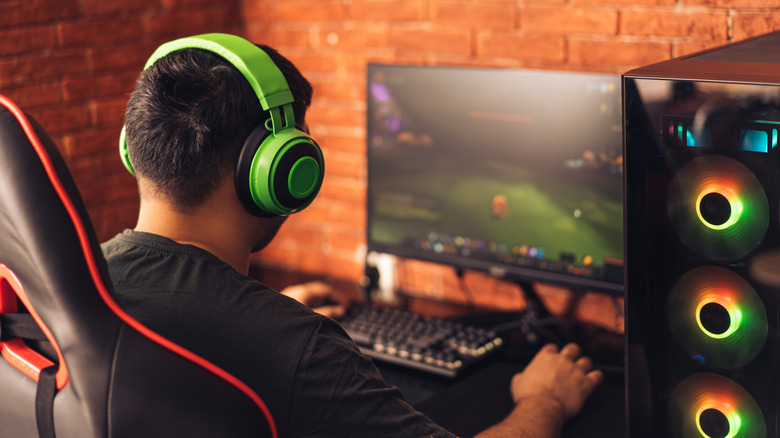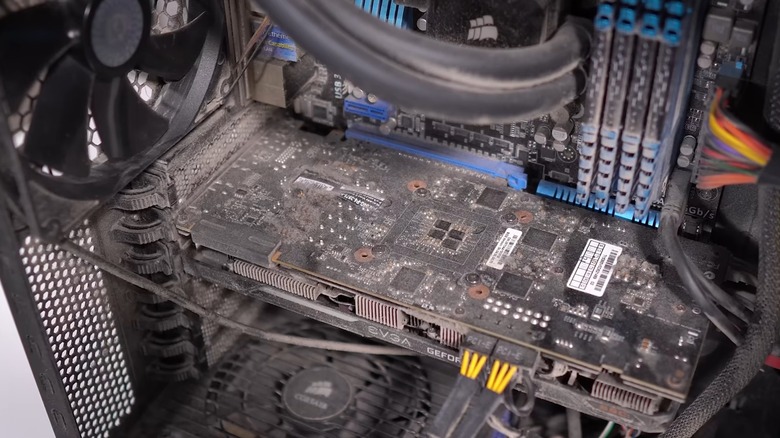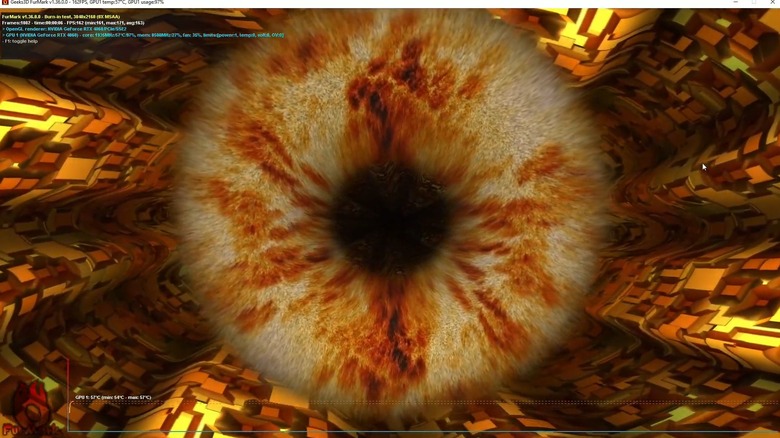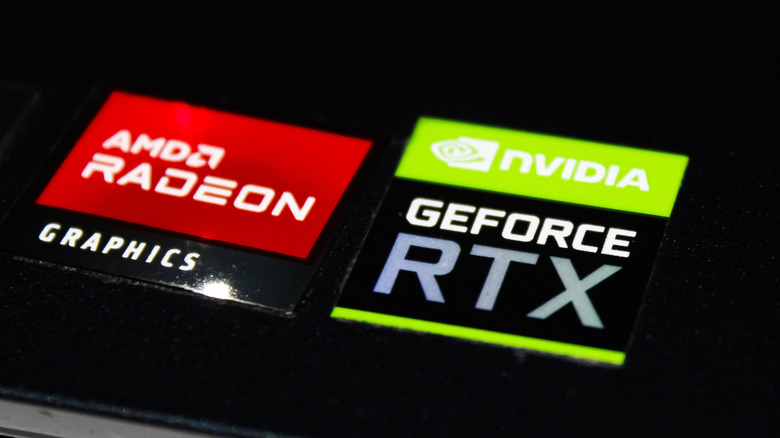What To Look For When Buying A Used GPU
With a massive community projected to reach beyond 1.85 billion players across the world, PC gaming is still going strong, estimated to reach $52 billion in 2024, according to Statista. Enhanced graphical fidelity, and higher frame rates, are a few of the advantages of owning a PC gaming rig, which allow you to customize the look and performance of your games.
Recent titles like "Black Myth: WuKong," which takes advantage of Unreal Engine 5s more robust toolset, recommend a NVIDIA RTX 20 series or Radeon RX 5000 series graphics processing unit (GPU). Even older titles like 2020's "Cyberpunk 2077" can push a GPU to its limit after applying a few resource-intensive graphical options (looking at you screen space reflections, ray tracing and volumetric clouds).
In order to get the most out of your PC games, you'll naturally want to crank the visual settings up to avoid a subpar experience. But when you start pricing out new GPUs with a bit more muscle, it becomes clear just how expensive PC gaming can be. New graphics cards might be completely out of reach in terms of cost, so exploring the used GPU market to save some money is important. Be cautious though, as you'll want to know what the card was previously used for, run a benchmark test on it to uncover any issues, and ensure the saving's of a used GPU are substantial enough to warrant the risk.
How did the previous owner use the card?
On one end of the spectrum, you might run across a used GPU from someone who occasionally played some "Fortnite" or "Factorio," and kept their case relatively free from dust buildup. In this ideal scenario, the card wasn't likely ever pushed very hard, and is still in great shape with plenty of life left.
However, if you discover the GPU toiled away endlessly in hot temperatures as part of a cryptocurrency mining rig, you might want to steer clear. While this issue was certainly more common a few years ago following a crash in the cryptocurrency market, some of these cards could still be out there in the marketplace. Consider closely examining the exterior of the card and look for discoloration on the circuit board, which could indicate overheating.
You might also be wary of a used GPU that was overclocked. Regardless of if you know how to overclock your gaming PC and the risks to be aware of, you'll want to get more information from any seller who has exceeded the stock settings on their GPU. Overclocking a graphics card can be done carefully in a way that minimizes risks. But those who don't go through the proper steps and carefully balance performance increases with stability, can cause future trouble. Even if the overclocking was done correctly, more power and higher heat can shorten GPU lifespan.
You should run a benchmark test before purchasing
While it may not be feasible in every case, running a stress test on a used GPU can give you some peace of mind. You might not get the full story from the seller, but the figures produced from tools like UNIGINE's Heaven benchmark, FurMark, or 3DMark can identify red flags before money changes hands.
For example, as the card is put through its paces rendering intensive visuals, do you see any strange artifacts such as colors or lighting that don't fit the scene, strange symbols, or lines appearing at random? These visual anomalies can be caused by computational mistakes within the processor, excessive temperatures, or simply be a sign the card is preparing to leave this mortal coil (its dying).
Other negative signs during a stress test would include any crashes, and if the GPU becomes unusually hot. Verify the GPUs cooling system (its fans) are running properly and ramping up correctly to keep pace with increasing load. You'll want to ensure before purchasing, that the card runs at the ideal GPU temperature range for gaming, and isn't overheating.
Is the used GPU a good value versus new?
A used card comes with risks that you don't get with a new GPU. You can never be completely sure what environment, what demands, and what maintenance was performed on a previously owned PC component. Therefore, you'll need to decide how much savings is worth choosing a used card over a new one. A used RTX 4080 Super may only net you a slight discount over a new card, whereas an RTX 2080 could provide a very hefty discount.
Current top-end cards offer terrible value — the Nvidia RTX 4090 is available on for around $1,578 used on average, and sells new for more than $1800. While the used card might save you a few hundred dollars, at prices above $1,500, why not pay the extra few hundred for brand new? Some of the best used deals can be found around the $300 price point, where you can get an AMD RX 6800 with 16GB of VRAM. At this price bracket, you can opt for the Nvidia RTX 30 series cards that offer ray tracing capability, however with only 8GB of VRAM, your ray tracing performance may not keep up with newer titles. In terms of NVIDIA versus AMD, there are pros and cons of each graphics card brand, but you can find some great used deals with a little due diligence, regardless of the brand.



